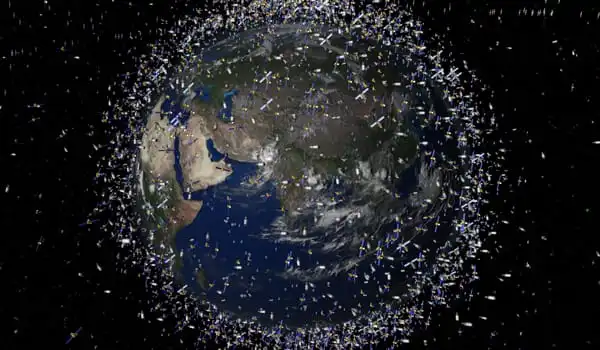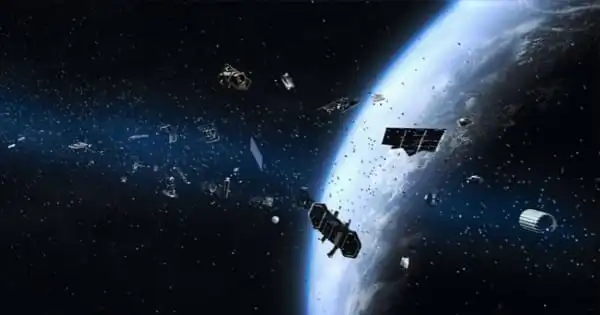Astroscale, a private orbital debris removal company, has verified its magnetic capture device, which is aimed to address the problem of space trash. For the first time, its End-of-Life Services by Astroscale-demonstration (ELSA-d) servicer satellite captured a simulated piece of space debris in orbit utilizing the technique.
A satellite built to test technology that could one day help clean up Earth orbit has been zooming in on a simulated piece of junk using its onboard sensors for the past few days. The Japanese company Astroscale’s attempt, however, fell short of capturing the target due to “anomalous spacecraft conditions.”
Despite the last-minute hiccup, Astroscale, which wants to deliver commercial space cleanup services as early as 2024, said in a statement that the demonstration, part of the End-of-Life Services by Astroscale-demonstration (ELSA-d) mission, was a success.
“ELSA-d was never going to be easy, even under perfect conditions,” Nobu Okada, founder and CEO of Astroscale, said in a statement. “But our worldwide team has surmounted various hurdles and enjoyed remarkable triumphs, which will accelerate the already rapid growth of the on-orbit service business.”
The team is analyzing the potential for a safe and viable magnetic recapture of the client. We cannot confirm a timeframe at this stage and will make another statement whether we do or do not proceed with the recapture.
Nobu Okada
During the seven-hour orbital movement, ground control teams guided the 386-pound (175-kilogram) “servicer” spacecraft, which was orbiting 340 miles (550 kilometers) above Earth, to within 520 feet (159 meters) of the 37-pound (17 kg) “client” satellite. The chaser then shifted from absolute navigation (using ground control and GPS sensors) to relative navigation mode, in which it moves totally independently using its own equipment.
“The trip to re-unite the servicer and client enabled us to demonstrate even more critical technologies and operational capabilities required for commercial end-of-life debris removal services,” said Seita Iizuka, ELSA-d project manager at Astroscale, in a statement. “Proving these capabilities provides us and our partners more confidence in the development of our debris disposal service.”
According to Astroscale, the demonstration’s greatest success was the changeover between the absolute and relative navigation systems, followed by autonomous tracking and approach to the target.
The chaser was supposed to eventually capture the client with the help of a magnetic device installed on both spacecraft. However, the procedure was eventually called off. The two spacecraft were separated for safety reasons and are presently separated by 1,000 miles (1,700 kilometers). The ground control teams will analyze the obstacles that hindered the capture in the following weeks before deciding on the next steps.

“The team is analyzing the potential for a safe and viable magnetic recapture of the client,” Astroscale told Space.com in an email. “We cannot confirm a timeframe at this stage and will make another statement whether we do or do not proceed with the recapture.”
ELSA-d, the first experiment of its sort, will launch from Kazakhstan’s Baikonur Cosmodrome in March 2021. The two spacecraft flew to space as a stack connected by a magnetic docking device. They had previously been separated during an earlier test in August 2021.
Setbacks marred the subsequent demonstration effort. An earlier effort at autonomous approach was called off in January due to “technical problems,” including the failure of four of the chaser spacecraft’s eight thrusters. Because the problem hasn’t been resolved, all subsequent maneuvers, including the most recent approach, have had to be executed with only half of the propulsion units available.
“This restricted the ability of the servicer to perform detailed rendezvous maneuvers with the client as originally planned,” Astroscale said in the statement.
Despite the hurdles, Astroscale expects to begin commercially cleaning up space trash over the next couple of years. Last year, the business struck a contract with megaconstellation operator OneWeb to collaborate on debris-removal technological advancements. Astroscale envisions a service that may deorbit many spacecraft one at a time in a single voyage, assisting in the maintenance of a sustainable and safe orbital environment. The satellites, however, would need to be fitted with magnetic docking plates before launch in order for a chaser spacecraft to grab them afterwards.
Many space safety specialists are concerned about megaconstellations like OneWeb’s, but especially SpaceX’s Starlink. With the rapidly expanding number of satellites in orbit, the probability of orbital collisions is increasing. The most dangerous threat comes from defunct satellites that are no longer under control. Removing them immediately following the completion of their job would aid in the preservation of order in the near-Earth environment.
Experts are concerned that if the problem is not addressed, it would result in the so-called Kessler Syndrome, an uncontrollable cycle of collisions predicted by NASA physicist Donald Kessler in the late 1970s.





